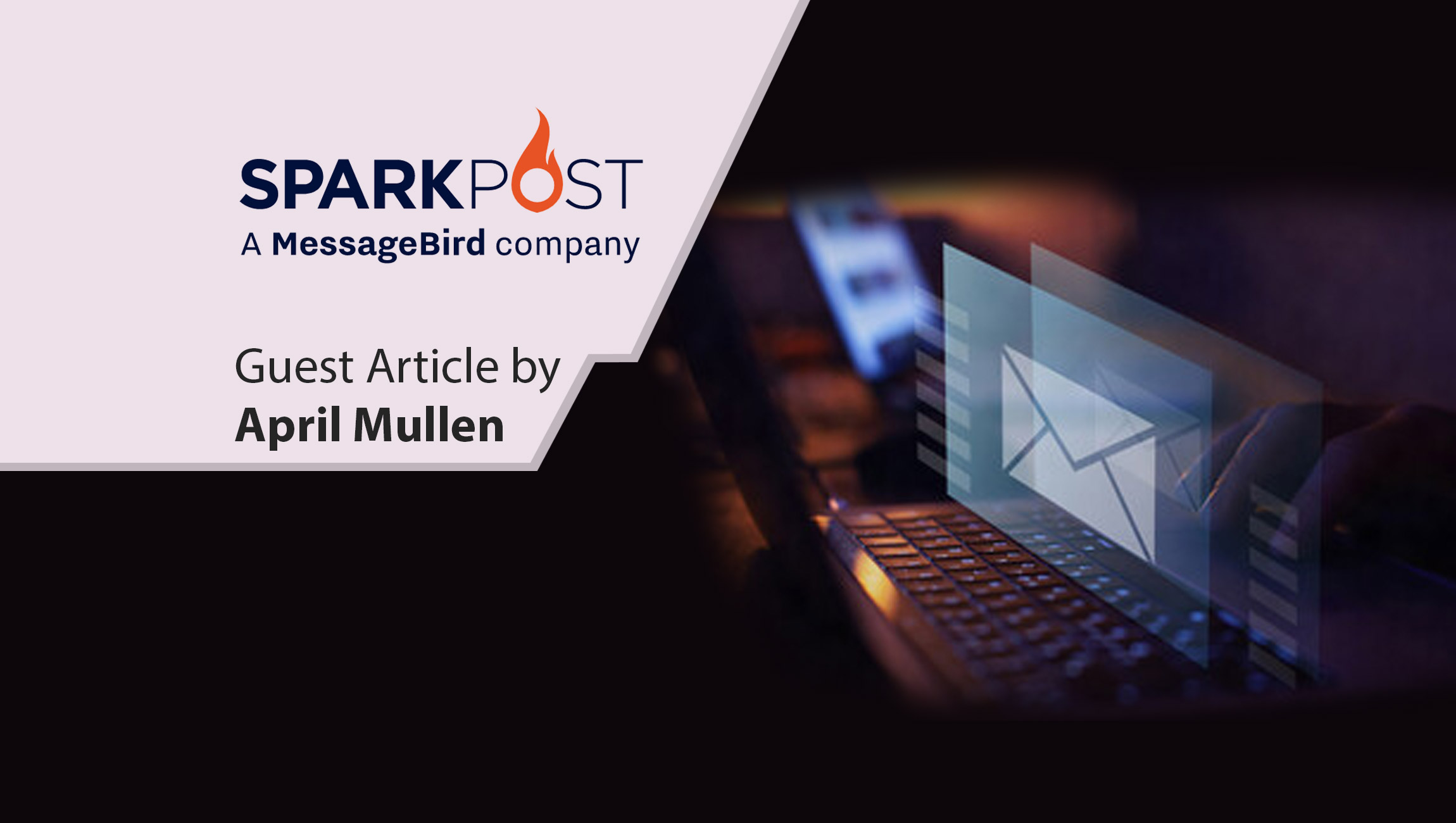There is so much that goes into making one email. In fact, SparkPost’s 2022 benchmark report found that 40% of companies take over two days to create and execute a new email campaign. And with top frustrations including slow execution, email designs taking too long and lack of relevant content, those two extra days can only be described as an intense scramble.
Generally, marketing teams follow a similar pattern when creating email and whether it’s a transactional, promotional, or community-focused email, the creation process is mostly the same. But it’s one that has been done the same way for years and includes a myriad of steps, loops and pathways, which is inefficient and leaves teams scrambling around feeling tired. And because the process hasn’t changed, it can be difficult to take a step back and see just how problematic it is.
A better way
Results from the benchmark report show that CRM and email marketing budgets increased in priority from 2020 to 2021. Brands are putting a lot more faith and emphasis in email for the future, after realising its reach and growth potential for their business (and its ability to weather external factors).
That provides more room for investment, but also gives email marketers the chance to shake up their current process and use some of that budget to help shape a much more efficient one that maximises the ROI potential of email.
For every challenge presented by email production, there is a solution.
The planning stage
1. Challenge:
A lack of competitive intelligence when planning email campaigns.
When planning your email campaign, having a good idea of what the industry and your competitors are doing can give you that hilltop view; you get more insight into what subscribers are responding to, and how emails are performing as a whole across the industry. That competitive intelligence can give you the edge and make your email campaigns even more effective.
2. Solution:
Competitor research isn’t all that tricky, though it can be subjective and time-consuming – and these are aspects that can slow down an already elongated email production process. But researching who your main competition is, and subscribing to their emails, gives you an insight into what they are producing. You can then use these to inform your own email marketing plans.
Marketing Technology News: CloudOffix Adds A New Partnership In The African Continent
Setting timescales and creating the copy
1. Challenge:
While writing the brief, workable milestones and timeframes need to be outlined that suit all parties. Then, you need to create amazing copy that fits the brief. All while balancing other projects. The copy might also go through many cycles of approval before moving on to the next step.
Copywriting isn’t a problem in itself; it’s when working together on feedback and iterations that delays and process issues can appear. Confusion over why edits have been made, who is working on what, or what particular parts need to be changed, can easily happen as a result. Plus, keeping all stakeholders to their agreed milestones as the project progresses can be a headache. Usually they are juggling multiple projects and dependencies and, now that many teams are working remotely (SparkPost’s 2022 benchmark report found that 49% of companies globally are still fully remote), it’s even trickier to keep track of timeframes, and even more critical to do so.
2. Solution:
Clarity and transparency when collaborating is vital, so any changes and edits are fully understood. This then helps keep stakeholders to their timescales, instead of being tempted to ‘sit on’ a problem.
Providing a centralised location for your stakeholders to work and collaborate in can increase transparency and accountability, which helps projects run smoothly. Try using dedicated folders and areas (such as in Google Drive or MS Teams) that the specific stakeholders involved have access to. Also, create pre-determined documents for the brief and the copy before the project begins. This means everyone who’s needed can see what’s going on, and knows where to go to pick up work.
Translations
1. Challenge:
Unless everyone in your team speaks multiple languages and understands localisation in email, translations can be a terrible headache. It’s not simply about translating the text, it’s about how it fits back into the email. Plus, if you have many different languages, you’ll need many different versions of the email – so re-creating and then translating each one is frustratingly long.
2. Solution:
It will help to know from the outset how many versions you will need for different languages, and therefore how many templates to prepare. Also, giving your translator access to these and the ability to directly edit will enable them to spot any changes needed in the structure (particularly in main copy areas) and decrease the chance of accidental errors stemming from moving translated text from one document to another.
Creating the email design
1. Challenge:
When creating email, it’s tempting to go for the jugular with amazingly creative visuals that wow your subscribers. But if they are off-brand, or your emails don’t contain standard brand visuals such as the correct logo, header and general colour scheme, they won’t resonate with your audience. If they struggle to recognise who they have received the email from, they are likely to either not read it or even unsubscribe.
2. Solution:
It’s crucial to communicate with a designer, and give them the correct tools and assets, so they are clear about your brand’s visual identification. Always keep your brand front of mind when designing the look and feel of an email – then you can get creative on top of that. Try the following:
- Defining design elements up front with your designer to identify which areas require branded assets (logos, branded bullet points, colours, etc.), plus areas where they could be ‘freer’ (background images or GIFs). This speeds up the design process by reducing discussion/clarification around these areas.
- Creating a checklist that includes all the common brand elements, so everyone is clear on what needs to be included. This can be used to help the designer and in any QA processes.
- Making sure that the designer can find and access the latest brand assets.
Legal approval
1. Challenge:
Usually, checking the legal requirements of an email campaign is low on the legal team’s priority list, which leaves you waiting for a response. And it’s not like you can spend the time optimising your email, because you’ll have to send that off to be checked, too.
2. Solution:
On the whole, legal approvals are based around certain common elements of an email campaign – legal text in a footer, or the legality of the logo you are using. By pre-creating these common elements and modules, and making them unchangeable, you can run them past legal teams beforehand meaning they don’t need to check them every time.
Marketing Technology News: MarTech Interview With Vitaly Pecherskiy, COO and Co-founder at StackAdapt
Content changes
1. Challenge:
During an elongated email creation process, the chance for last-minute changes increases and it can seem like you’re constantly playing catch up. Making changes to an email usually results in different HTML documents being saved, which can get quite dense quite quickly and, at worst, risks the team getting confused and progressing with an older version containing out-of-date information and any errors that were subsequently fixed.
2. Solution:
The easiest way to limit content changes is to speed up the whole process, so your email hits the original brief. That’s not always possible, but what you can do is implement a common naming convention for all of your HTML documents, no matter the campaign. This decreases the chance of you progressing with an older version after having to go back and make changes.
Pulling the list together
1. Challenge:
Pulling the list, and then validating it, is an arduous task. But it’s necessary to avoid any inconsistencies which can affect any personalisation or segmentation you plan to use.
2. Solution:
Instead of minutely checking and validating the list at every send, why not regularly practise list hygiene? Conducting consistent data checks helps ensure that the data you are sending is healthy, robust and won’t cause any dynamic content errors. Then it’s simply a case of pulling the list you need and conducting a quick check before uploading it.
Deployment
1. Challenge:
‘Sending fear’ is a very real psychological phenomenon. Having dragged yourself through an elongated and frustrating process, you’ve reached the point of no return: once you’ve sent your email you can’t get it back, and any mistakes can’t be corrected. It may seem sensible to go back through what you’ve done and check for the upteenth time but if your QA procedure is robust and effective, that’s unnecessary.
Hidden mistakes and issues are common, and are sometimes tricky to spot at any stage. But it’s rarely due to personal responsibility or competency and instead down to years of draining, complex and inefficient email creation processes that have collectively become the norm. We expect roadblocks and issues when creating email, and therefore we almost expect mistakes in the final product.
2. Solution:
Build a process that systematically eradicates or prevents mistakes from being included. That way, you can be confident that hitting send isn’t going to induce more anxiety.
Conclusion
While email is a very effective and trusted marketing channel for communicating with customers – with high potential ROI, excellent reach, and boundless creativity – making them isn’t easy.
Given all the work that goes into creating just one, it’s difficult to actually hit that ROI statistic – especially if your process is inefficient, long and leaves the email team jaded and tired at the end of it. Making your process even just a little bit more efficient can have wide-reaching benefits for the marketing team and whole business.
More tips and advice for creating emails can be found here.
Marketing Technology News: The Future of Digital Marketing Rests With Consumers











